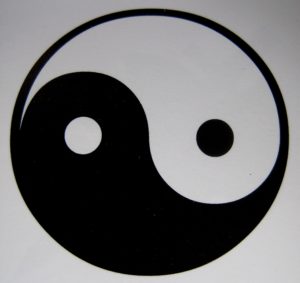
– Photo by Jan Ketchel
The diagnostic tool of the American Psychiatric Association, DSM-5, classifies pervasive narcissism as a personality disorder, a mental illness. I would argue that narcissism is a stage of cognitive and emotional and moral development. Fixation can occur at this egocentric stage of development. In fact, collectively, humankind is currently fixated at this stage. However, this is not as a result of mental illness but simply because of a lack of evolutionary maturity.
Narcissus, the namesake of narcissism, fell in love with his own reflection as he gazed into a clear pool of water. Narcissus’ utter fascination and love for his own image absorbed his total being, much the same as any thunderstruck lover is utterly absorbed with their soulmate.
At its most basic, narcissism is the inability to see and experience the world holistically. The absorption with self narrows every sensory interpretation of the world. People, events, and things are seen through the lens of self-need and self-gratification.
Cognitively speaking, although one knows of the existence of others beyond the self, one is solely focused on their utility to satisfy the needs of the self. Thus, self-interest can be characterized as the overarching focus of a narcissistic worldview.
Since love is fixated upon the self, the narcissist simply cannot sustain interest in a story void of itself. It literally zones out or falls asleep as it attempts to listen. This, however, is not volitional; the narcissist’s total preoccupation with the aggrandizement of self is truly all-pervasive. For the narcissist there simply is no energy or interest in anything that does not bring exclusive consideration and attention to the self.
Narcissism has its roots in the incarnation of spirit in a physical body. The body of a human is animal. Like all animal species, the human animal is governed by archetypal programs nuanced to the idiosyncrasies of its species. These programs govern the instincts of feeding, self-preservation and reproduction.
Emphasis upon survival of self is the overarching intent of the instinctual core of humankind. Food, sex, and power are procured for the survival of self. Even though sex generally involves another person, the instinct offers satisfaction to insure its own intent of reproduction of its self in a new birth.
Clearly, narcissism is a normal developmental theme of childhood. Much of the social challenge in schooling revolves around learning to share and be considerate of the needs of others. Although most children learn ultimately to behave with a certain level of altruism for adaptive purposes, the truth is that their narcissistic underpinnings merely slip into the shadow of their personality where they continue to dominate emotionally and cognitively.
Nonetheless, childhood education does help to refine the ego self, which is the spirit’s workhorse challenged to master the trials it assigned itself for its current human life. Ego develops consciousness to exercise freedom of choice through exercise of the will.
With free will the ego can choose to oppose the urges of instinct with which it contends. Conversely, ego has the capability to collude with instinct and tweak it to its own designs, behaving in ways instinct would never venture on its own. This is frequently the combination that underlies the acting out of horrific abuse.
The ego also has the ability to nearly completely shun grounded life in a physical body and identify itself instead with a high spirit self. Frequently this invites spirit contact with entities that will feed this inflation for their own nefarious purposes. Narcissism, in this case, manifests as a belief that one is a high Self, greater than most other humans. This narcissistic lens remains focused on the greatness of self.
In the course of human evolution, rites of passage were aggressively employed to broaden one’s narcissistic identity. Thus, personal and familial loyalty were broadened to include identification with the greater community. The failure of modern civilization to preserve and deepen these initiation rites is reflected in our current world crisis, with its ultimate roots in pervasive narcissism.
The central tool of initiation is sacrifice. Sacrifice accrues to the ego the ability to both wrestle from the instinct its primal power and dominance and spiritually align itself with the needs of the greater good. Our willingness as individuals to sacrifice our narcissistic fixation upon self, as it reflects in family, ethnic and national partiality, to find equanimous love for all, is the key to reaching the next stage of developmental growth.
As Gaia ups her climate change game, humankind is being placed in her retort, as we must suffer her alchemical operations to assist us in rising to the next level of evolutionary progress, heart centeredness. Heart centeredness is love beyond the self, love that includes the welfare of the entire world. This is love that knows and acts upon what is truly right, beyond the polarized centers of greed and self-interest.
Gaia is returning us to the initiation rites of yesteryear where suffering, not education, served to emancipate one from total fixation upon the self. Beyond that fixation is entry into an interdependent world of unlimited possibility. True transformation, real growth, shall be the outcome of this time of great suffering and change.
Such a privilege to be in this world at such a milestone transition. We’ve all been called here to facilitate and be part of this great transformation, despite, and because of, the suffering.
Carry on,
Chuck

